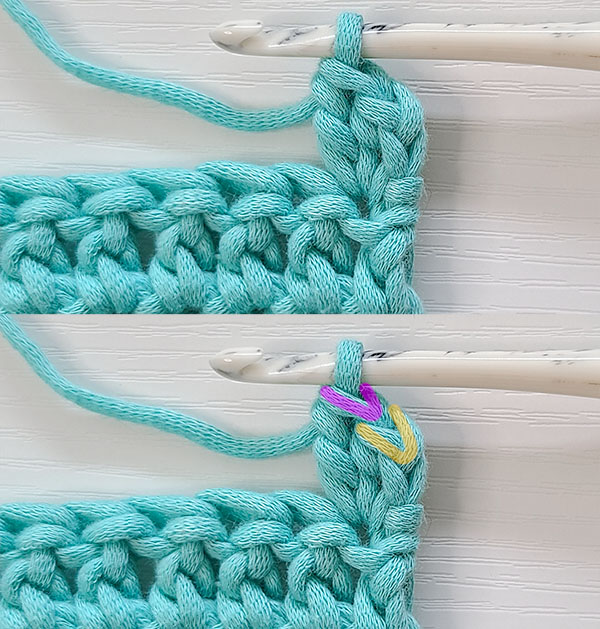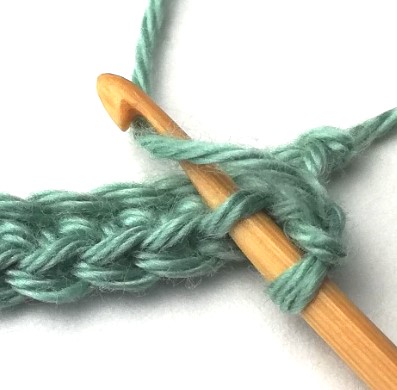I managed to design a crochet bag that will allow me to:
- change its size.
- change its colour.
- change its handle.
- use leftovers or discarded material.
I hope that it will reduce the "discard mentality" as one cannot be bored with a bag that one can personalise. You can read why I design it that way from my post, I am a GreenBeing Designer.
This is how the bag can look like. The handles are made of cords removed from a paperbag.
It is actually a container cum bag because the second layer in beige can be removed as it is just woven onto the green container with a piece of string. The small mesh crochet stitch I made on the top and lower portion of the beige layer and on the green container allows me to attach more layers to change the size of the container cum bag.
If you like the ruching crochet pattern that I used for the beige layer, you can find the instruction on how to make it at Underground Crafter.
You can learn how the small mesh crochet stitch is made at Aabhar Creations. I like the crochet instructions there because they indicate how many stitches is required to complete a pattern which is 2 for this small mesh crochet stitch.
If you are working with leftover yarns, you can decide if you want to use the ruching crochet pattern or the small mesh crochet stitch, which requires less yarn to create your layers. You can decide how many different colours you would like to use and how many rows each layer should be. You can check out my Pinterest Board for Colours and Combinations if you cannot decide on the colours to use.
You can make a bag out of the layers you have made if you do not want to have them attached to a container. Your bag is completed once you have woven a string through one end of a layer to close it up and add handles to the layer at the other end.
If you would like to include a container to your bag, you can check out the circular crochet patterns that I have saved on the following Pinterest Boads for inspirations:
Circular Base and Body Bags and Baskets
Circular Crochet Patterns
This is the crochet pattern I chose to make the container.
It is actually a pattern for making this hat for a toddler.
The thing about making a circular crochet item is that once you change the crochet pattern without increasing the number of stitches in the following rows, it will no longer be a flat piece of work. This is how mine turned out after I crochet three rows of the shell pattern.
I used two strands of 4 ply wool to crochet it. The base looks flat because I have inserted this circular packaging item for bicycles that I have in my bikeshop. It fitted perfectly.
You can make your own circular base to fit your crochet container by cutting it out of a cardboard box or from a large round plastic container. If your insert looks good, you can consider making the base with this crochet pattern I found on Pinterest as it will require less yarn to complete. As you can see from the diagram, there is an increase in one chain stitch for each row. If you continue to crochet using the pattern on the 6th (last) row, your work will go upwards to form a container.
I tend to choose net or mesh or see through crochet pattern for making bags if I intend to use reusable bags as inserts in them. I noticed that the quality of most of the free reusable bags that I received from retailers are poor. So, they will last longer when I use them as inserts.
On top of that, you can easily personalise such crochet pattern. Can you see the heart shape on this bag? It is made with a cord removed from a paperbag. You can also use leftover ribbons to weave through the stitches to create your own design.





































